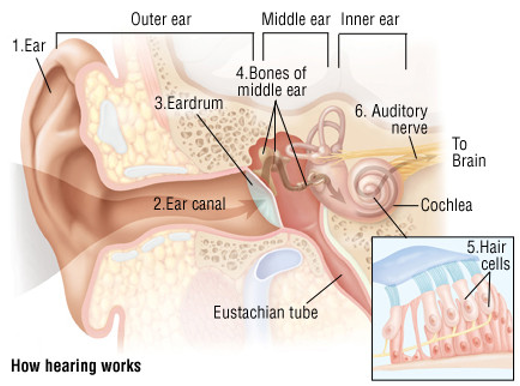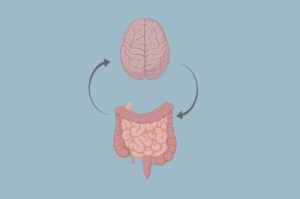
Figure 1: A network of neurons in the brain
Source: Elizabeth A. Weaver II & Hilary H. Doyle
Thousands of different cultures, traditions, and values define the many communities present worldwide. The overwhelming diversity of people around the globe is incomprehensible. There is, however, one thing that brings us all together. You might be thinking what I am thinking: yes, music. Even though music comes in many different genres, ranging from rock, classical, pop, rap, R&B, and many more, the instruments used to make these musical genres come alive are mostly the same in many cultures. The advent of music dates back to early human history and is still present in all aspects of society today. Think about all the places you go to where music is present: restaurants, coffee shops, airports, malls, museums, laboratories, expositions, theaters, and even public restrooms. Music follows us wherever we go and impacts our daily lives on a personal and deep level.

Figure 2: A depiction of the two brain hemispheres and the functions associated with each
Source: Cognifit
As people listen to music, they undergo a rollercoaster of emotions. These varying emotions are attributed to changes in the brain activity of the listener. Specifically focusing on music made using string instruments, the right hemisphere of the brain is activated when the listener experiences emotion (Trimble & Hesdorffer, 2017). The right hemisphere is the creative headquarters of the brain as it also deals with multitasking, concentration, imagination, and many other processes we are capable of performing (Figure 2). As a result, the arousal of this hemisphere brings about many benefits. Before we address these effects, let us take a closer look into the activities of neuronal systems in response to music.
Neuronal Processes
As you might know already, music travels in sound waves. These waves enter the ear and hit the eardrum, triggering movement of the middle ear bones and ultimately causing the cochlea to vibrate. The cochlea is the spiral cavity of the inner ear that produces nerve impulses in response to sound vibrations (Figure 3). Within the cochlea are stereocilia, hairlike projections that are the primary structures used in sound transduction (Figure 3) (Schaefer, 2017). As you listen to music, the stereocilia bend, sending a signal to the auditory nerve, which continues on to the auditory cortex of the brain for processing (Schaefer, 2017). Because of the incredibly high speeds of the auditory system, signal detection and amplification can be processed by one hair cell (Schaefer, 2017). Different parts of the brain are activated depending on the loudness, tempo, pitch, and consonance of the sound.

Figure 3: An animated version of the pathway of sound waves from the ear to the brain
Source: Harvard Health
Functional neuroimaging studies of the human brain using MRI & PET scans show that music activates the nucleus accumbens (NAc) and the amygdala, two brain structures known to be crucially involved in emotion (Schaefer, 2017) (Figure 4). The NAc is located in the mesolimbic system, sometimes called the reward center; it plays a huge role in generating pleasure and laughter, but also fear, aggression, impulsivity, and addiction (Schaefer, 2017). The positive emotions we experience when listening to music are associated with the release of dopamine (Figure 5), a neurotransmitter associated with feelings of pleasure. The release of dopamine by one neuron results in the excitation many neighboring neurons. Like a troupe of dancing cells, the activated neurons contribute together to the experience of positive emotion.
The amygdala is the central headquarters of your brain’s emotional network. It works along with the hypothalamus, a structure involved in memory, sleep, emotion, and many other processes, to regulate the release of hormones, such as cortisol and endorphins. Lower cortisol levels correspond to a reduction in emotional stress, which is achieved when listening to pleasant music. In addition to the hypothalamus, the hippocampus, another brain structure found in the mesolimbic system dealing with memory and emotion, is also involved in regulating hormones. Interestingly enough, it has been seen in PET scan experiments that blood-oxygen-level dependent (BOLD) signals in the amygdala and the hippocampus decreased when subjects listened to pleasant music (Schaefer, 2017; O’Kelly, 2016). Furthermore, the occurrence of chills increased in intensity as BOLD decreased when people listened to their favorite tunes (Schaefer, 2017). Keep in mind that these brain structures are interrelated in that one component is regulated by multiple structures as the signal activates many different neuronal pathways.

Figure 4: Cortical areas of the brain activated in the onset of emotion, in this context, while listening to music
Source: Thomas Baumgartner, Michaela Esslen, & Lutz Jäncke
For the sake of simplicity, you can think of these neuronal processes as responses to the onset of emotion during music listening. As pleasant sounds flow through our ears and into our brains, they initiate a domino effect from one brain structure to another, as well as between neurons. The participating brain structures relay the signal to each other, like passing the baton in a track relay race. The neurons in each brain structure associated with emotion are then activated and are now able to release “happy hormones”, such as dopamine and endorphins. The hormones released trigger physiological and emotional change, which is what results in a wide range of benefits.

Figure 5: The molecular structure of dopamine, a neurotransmitter
Source: Stefan Koelsch
Benefits of Music
These complicated changes occurring in our brains as we listen to music are not all for nothing. There is a process called neuroplasticity in which the brain’s neuronal circuits change as they interact with the environment. It has been found that the neuronal pathways activated for the duration of music enjoyment improve memory on knowledge-performance STEM exams (Gao et al., 2020). You heard that right, ditch those practice exams and get on that classical music… Just kidding (but do get on that classical music).
In addition to memory, a link has been found between music and listening; music may change the listening strategies of the brain, further improving the understanding of speech as it is processed with slightly different cues (Kraus & White-Schwoch, 2016; Mankel & Bidelman, 2018). Surprisingly enough, music also strengthens sound-to-meaning connections; this skill comes hand-in-hand with language as learning new sounds can be hard without those elaborative conditioning skills. Music is now even being utilized for a field of psychological treatment: Music therapy.
Conclusion
All of these intertwined and complicated brain processes react to music in a way that empowers physiological and emotional changes. Zooming into the neuronal processes occurring at each brain structure allows us to further understand the relationship between music and our bodies. Brain structures particularly involved in emotion activate through a neuronal pathway leading to the production of pleasure hormones. These hormones not only regulate bodily functions, but also lead to alterations in neuronal circuits and brain processes that provide the benefits associated with music listening. Such benefits include enhanced memorization, more effective listening strategies, stress reduction, and many more! The effects of music on the brain is a field of research that is still being investigated and developed. Further advancing our knowledge on these small-scale processes and their enormous potential will allow for the creation of therapeutic techniques.
References
Trimble, M., & Hesdorffer, D. (2017, May 1). Music and the brain: The neuroscience of music and musical appreciation. Retrieved March 02, 2021, from https://www.ncbi.nlm.nih.gov/pmc/articles/PMC5618809/
Schaefer, H. (2017, November 24). Music-evoked emotions-current studies. Retrieved March 02, 2021, from https://www.ncbi.nlm.nih.gov/pmc/articles/PMC5705548/
Kraus, N., & White-Schwoch, T. (2016). Neurobiology of everyday communication: What have we learned from music? The Neuroscientist, 23(3), 287-298. doi:10.1177/1073858416653593
Mankel, K., & Bidelman, G. (2018, December 18). Inherent auditory skills rather than formal music training shape the neural encoding of speech. Retrieved March 02, 2021, from https://www.pnas.org/content/115/51/13129#:~:text=In%20conclusion%2C%20our%20findings%20reveal,precise%20neural%20encoding%20of%20speech.
O’Kelly, Julian. (2016). Music therapy and neuroscience: Opportunities and challenges. (n.d.). Retrieved March 02, 2021, from https://voices.no/index.php/voices/article/view/2309/2064
Chenlu Gao, Paul Fillmore, Michael K. Scullin. (2020) Classical music, educational learning, and slow wave sleep: A targeted memory reactivation experiment, Neurobiology of Learning and Memory. Volume 171, https://doi.org/10.1016/j.nlm.2020.107206.
INTEGRATING the two hemispheres of the brain. (2017, September 15). Retrieved March 02, 2021, from https://www.brainobrain.cz/en/2016/06/26/integrating-the-two-hemispheres-of-the-brain/
Publishing, Harvard Health (2020). “Hearing Loss in Adults.” Harvard Health. Retrieved March 20, 2021 from www.health.harvard.edu/diseases-and-conditions/hearing-loss-in-adults-a-to-z.
Lam, K., & Jadavji, N. (2018). Seeking happiness: Understanding the mechanisms of mixing music and drugs. Journal of Young Investigators. doi:10.22186/jyi.34.5.31-38
Weaver II, E. A., & Doyle, H. H. (2019, September 19). Cells of the brain. Retrieved March 21, 2021, from https://dana.org/article/cells-of-the-brain/
Related Posts
To safeguard Africa’s topmost predators
From Nepal’s bengal tiger to Kenya’s big Lions, conservation of...
Read MoreWhy Future A.I Robots Should Be Created With Immutable Code Limiting Singularity
Figure: Sophia, the first robot citizen in the Global A.I...
Read MoreThe Microbiota-Gut-Brain Axis May Be the Missing Link Between Autism Spectrum Disorder and Anorexia Nervosa
Figure 1: The microbiota-gut-brain axis is a bidirectional pathway of...
Read MoreTala Shaibi



